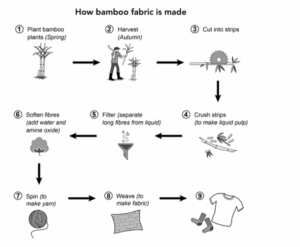Why do we sometimes put a comma between two adjectives? Why do we say “an old American car“ but not “an America old car“? The answers to these questions lie in the difference between cumulative and coordinate adjectives.
Take a look at the example below:
Three lovely young ladies
There are three adjectives (in bold) modifying a noun (ladies). Each adjective gives more information about the ladies. These are cumulative adjectives that build up meaning as they get closer to the noun they modify. They work as a unit, and you cannot separate them by words like and. For example, you can’t say “three and lovely and young ladies.”
Moreover, their order is fixed and cannot be changed. You can’t say “lovely young three ladies.” It doesn’t sound natural.
Now, look at this one:
lovely, wonderful ladies
Lovely and wonderful now do not work as a unit. They can be separate from each other, and you can change their order without sounding unnatural. This time they are called coordinate adjectives.
- lovely and wonderful ladies
- wonderful, lovely ladies
More examples for coordinate adjectives:
- an expensive, wasteful project = a wasteful, expensive project = an expensive and wasteful project
- a happy, lively dog = a lively, happy dog = a lively and happy dog
As you can see, such adjectives modify the noun individually and are separated by a comma or the word “and.”
In summary, if you can put “and” between the adjectives or change their order, they are coordinate. If you can’t do so, they are cumulative.
Question 1: I’m confused! Can an adjective be both coordinate and cumulative?
Answer: An adjective is not cumulative or coordinate. When we say coordinate or cumulative, we refer to a group rather than each adjective. For example, “lovely” is referring to an opinion. When it comes with another adjective referring to an opinion too, they are called coordinate adjectives. On the other hand, when an adjective comes with another adjective from a different category, they are called cumulative. For example, three is a quantitative adjective, and young refers to the age in our first example. Therefore, they cannot be considered coordinate adjectives when they come together.
Note: Below is the category of adjectives and the order in which cumulative adjectives should come.
- Quantity or Number: three, five, seventh, etc.
- Quality or Opinion: lovely, beautiful, usual, etc.
- Size, length, height: big, small, tall, short, etc.
- Temperature: hot, warm, cold, freezing, etc.
- Physical quality or appearance: thin, untidy, bald, blonde, etc.
- Age: old, new, young, etc.
- Shape: round, rectangular, etc.
- Color: blue, black, etc.
- Proper adjective (often nationality or religion): American, Christian, German, Indian, etc.
- Material: metal, gold, wooden, etc.
- Purpose: Cleaning, cooking, electric, writing, etc.
Examples for the order of cumulative adjectives:
- an old dark green sleeping bag
- five big old wooden writing desks
- Two big hot glasses of coffee
Final Notes:
- Long strings of adjectives (more than three) sound awkward in English. Therefore, you don’t see them very often.
- Memorizing the list above might be hard at first, but you should know that you can do it with enough practice.
- A native speaker of English might not even know this list exists. That’s because this order comes naturally to them. But for a non-native speaker, knowing this list is essential.
- You can find many slightly shorter lists or longer lists on the internet. Some lists even have different arrangements. In the list above, we have tried to use the advice of the most reputable sources like Practical English Usage by Michael Swan.
Follow us on YouTube for more tips and resources.








